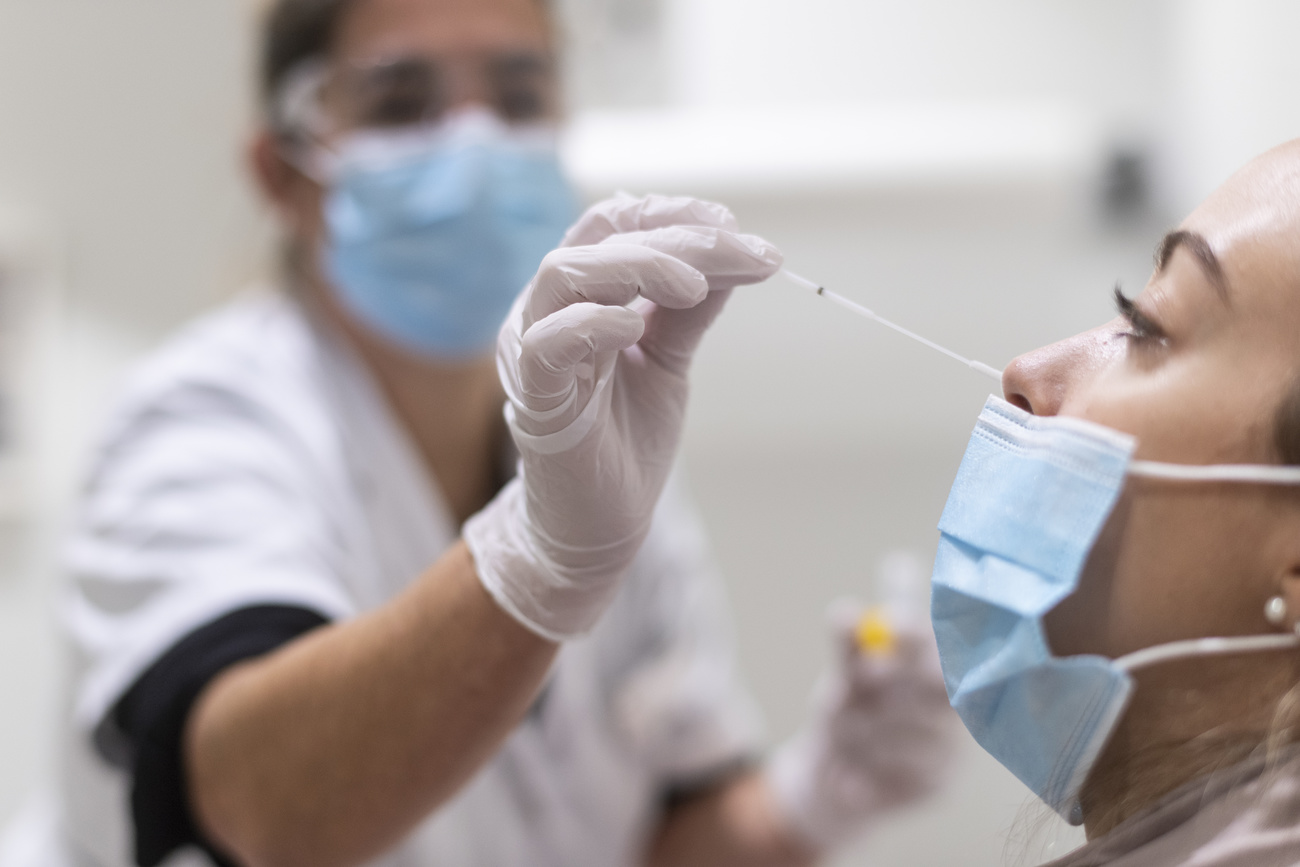Swiss government: ‘The second wave has arrived’

The second wave of Covid-19 has arrived in Switzerland faster and stronger than expected, according to the federal health authorities.
Just over 3,000 new positive coronavirus cases and eight deaths were reported on Tuesday. The seven-day average of new cases has increased by 123% on the previous week to 2,636. On a per capita basis, Switzerland has twice as many new infections as Italy.
“The second wave has arrived, faster and clearer and stronger than we would have thought two or three weeks ago,” said Thomas Steffen, a Basel physician and member of the board of cantonal physicians at a press conference on Tuesday.
According to Stefan Kuster from the Federal Office of Public Health, authorities have hospitalisations under control but the number of people in intensive care stations was changing quickly. At midday on Tuesday, of the 700 occupied intensive care beds about 100 were occupied by Covid-19 patients. Five days ago there were 61 people with Covid-19 in intensive care.
“The doubling in hospitalisations [since last week] is noticeable,” Kuster said at a press conference on Tuesday.
He cautioned against comparing infection numbers in this wave with those in the first wave. “While younger people were mainly affected in the summer, we have seen a change in the past few weeks.” Positive cases are spread across age groups, he said.
Studies show that the more virus spreads in the population, the more concern there is for older populations in nursing homes.
Amid the spike in cases, on Sunday the government announced several measures to bring the cases under control. These include a mask-wearing requirement in all indoor public spaces, a recommendation for home office and limits on the number of people in private gatherings.
The health authorities expect cases to double every week until the new measures take effect.
Breaking the chain
The surge in cases is complicating contact tracing, especially as cases are all over the country. All cantons are well above the risk limit of 60 infections per 100,000 inhabitants, which has been used to classify regions at high-risk. “We still don’t understand where the infection took place for the majority of cases,” Kuster said.
Rapid tests are currently being validated and the authorities will decide in the next few days when, for whom and how these can be used. The government has also massively increased its stock of supplies.
The government has not developed a master plan of measures it could put in place if the situation were to worsen. It also said there wasn’t enough evidence that a short lockdown as a “circuit breaker” could help bring the virus under control. However, Kuster said every measure was being considered that could help contain the virus.

In compliance with the JTI standards
More: SWI swissinfo.ch certified by the Journalism Trust Initiative
You can find an overview of ongoing debates with our journalists here. Please join us!
If you want to start a conversation about a topic raised in this article or want to report factual errors, email us at english@swissinfo.ch.